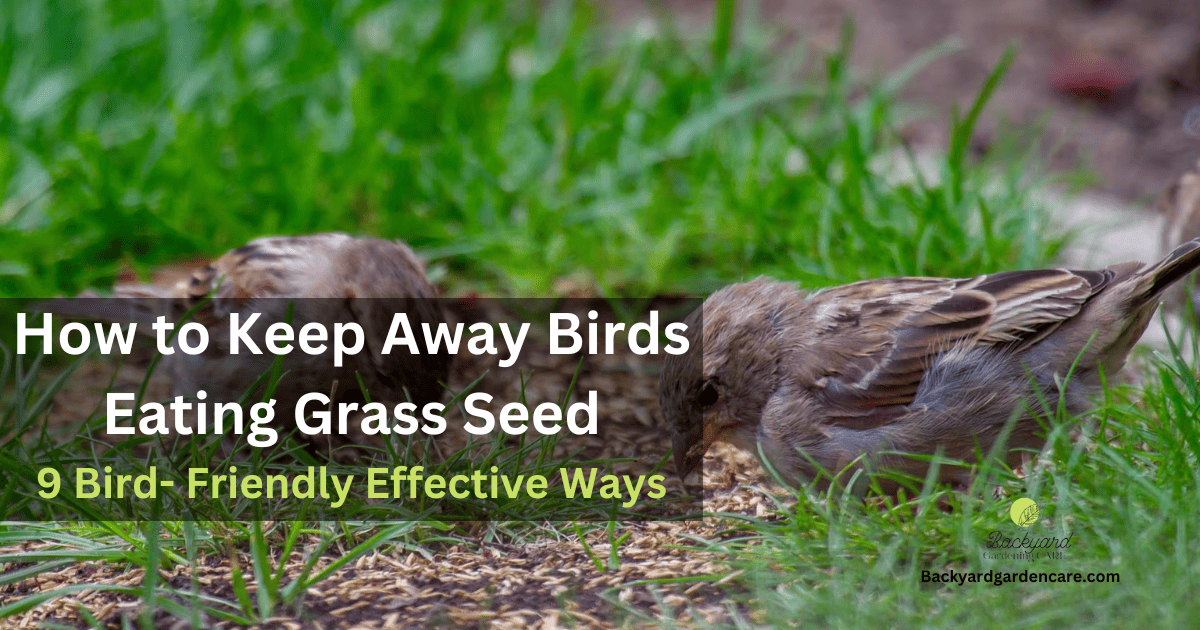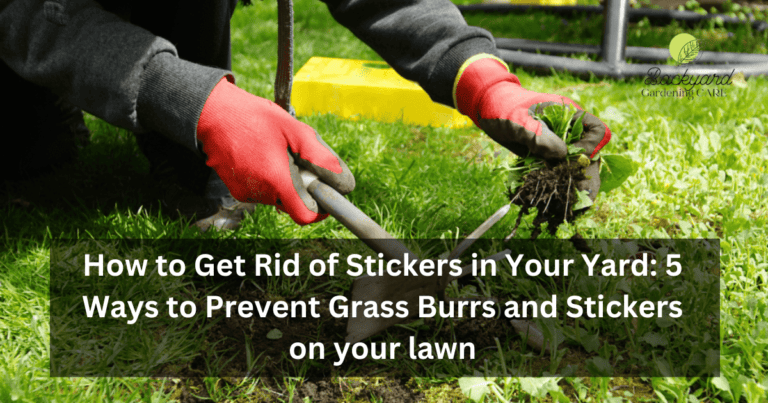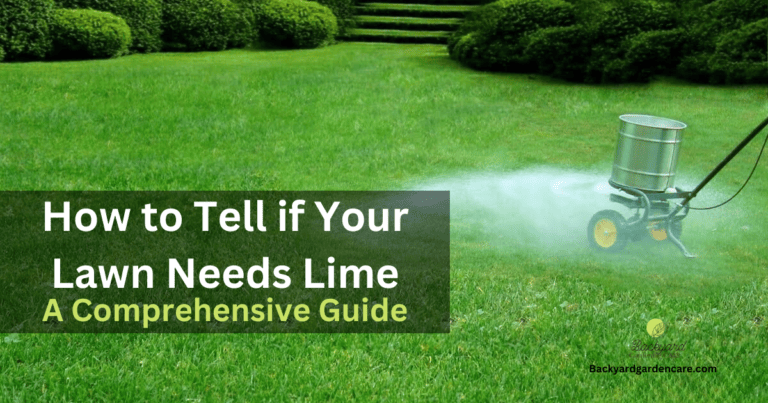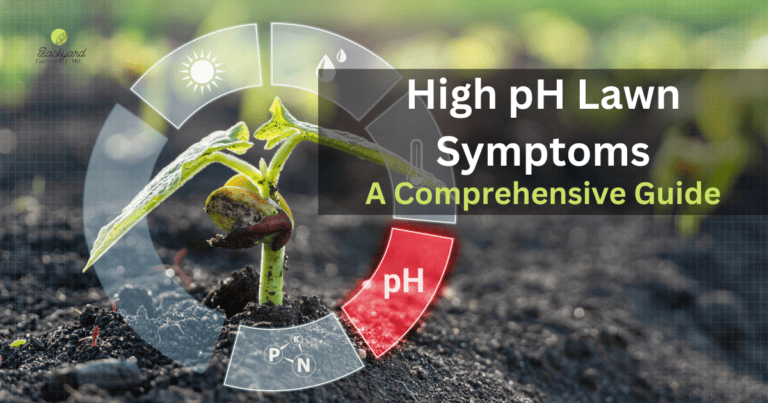How to Keep Away Birds Eating Grass Seed: 9 Effective Ways
Birds can be charming to any garden with their melodious songs and colorful plumage. Birds eating grass seed can be a frustrating problem for homeowners and landscapers alike.
Not only can they undo hours of hard work, but they can also cause damage to your lawn. Fortunately, there are effective methods to keep birds away from your grass seed and maintain a healthy lawn.
In this blog post, we will discuss several strategies and techniques that you can implement to protect your grass seed from bird damage. Whether you are a homeowner or a professional gardener, these tips will help keep your lawn pristine and bird-free.
Let’s start with why birds eating grass seed and how we can solve this.
The Environmental Impact of Birds Consuming Grass Seeds.
Birds are often seen as beautiful and majestic creatures, soaring through the sky and filling our surroundings with melodious songs. However, it is important to recognize that birds also play a significant role in our ecosystem, and their feeding habits can positively and negatively impact the environment.
One such example is a bird eating grass seed, which can have far-reaching consequences. Grass seed is an essential component of many ecosystems, providing vital nutrients to the soil and contributing to the growth of lush, green landscapes. In addition, straw can protect the grass seeds, ensuring their successful germination and growth.
It also serves as a food source for various animals and is crucial in maintaining biodiversity. However, when birds consume large quantities of grass seed, it can disrupt the ecosystem’s delicate balance. To address this issue and balance the quantity of water to new grass seeds, it is important to take measures to protect these essential components of our ecosystems.
Furthermore, when birds consume grass seed, they may inadvertently spread the seeds to areas that are not native or desirable. This can lead to the introduction of invasive plant species, which can outcompete native vegetation and disrupt the natural balance of the ecosystem.
Invasive plants often negatively impact the environment, including the loss of habitat for native wildlife and reduced biodiversity. While the environmental impact of birds eating grass seed is a valid concern, it is important to note that birds also provide numerous benefits to the environment.
Birds are natural pollinators, helping to facilitate the reproduction of plants and ensuring the continued existence of many species. They also play a crucial role in controlling insect populations, reducing the need for harmful pesticides.
Birds That Consume Grass Seed.
Some of the common types of birds that eat grass seed include sparrows, finches, pigeons, blackbirds, meadowlarks, and cardinals. However, it’s important to note that while these are the usual suspects, most birds pose a threat in some way or another.
Even if they aren’t directly eating the seeds, they may still cause disturbance by digging for worms, ground moles or insects in your soil, potentially damaging seedlings in the process.
It’s crucial to be aware of the various bird species that may be attracted to your property and take necessary measures to protect your crops or plants from their disruptive behavior.
Birds Eating Grass Seeds How to Keep Them Away.
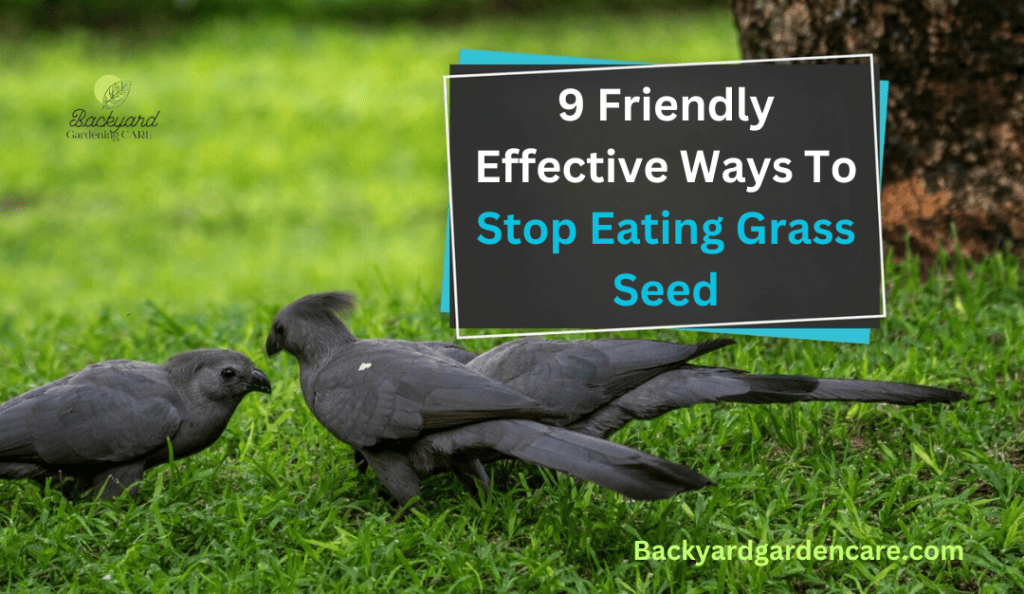
Any homeowner is proud of their lush green lawn. When birds start eating your freshly sown grass seed, it can be frustrating and negatively impact your efforts to maintain a beautiful lawn.
Fortunately, you can employ several effective strategies to keep birds from eating grass seed and promote successful germination. In this section, we will explore these strategies, enabling you to maintain a healthy lawn.
Distract Birds with Alternative Food Sources.
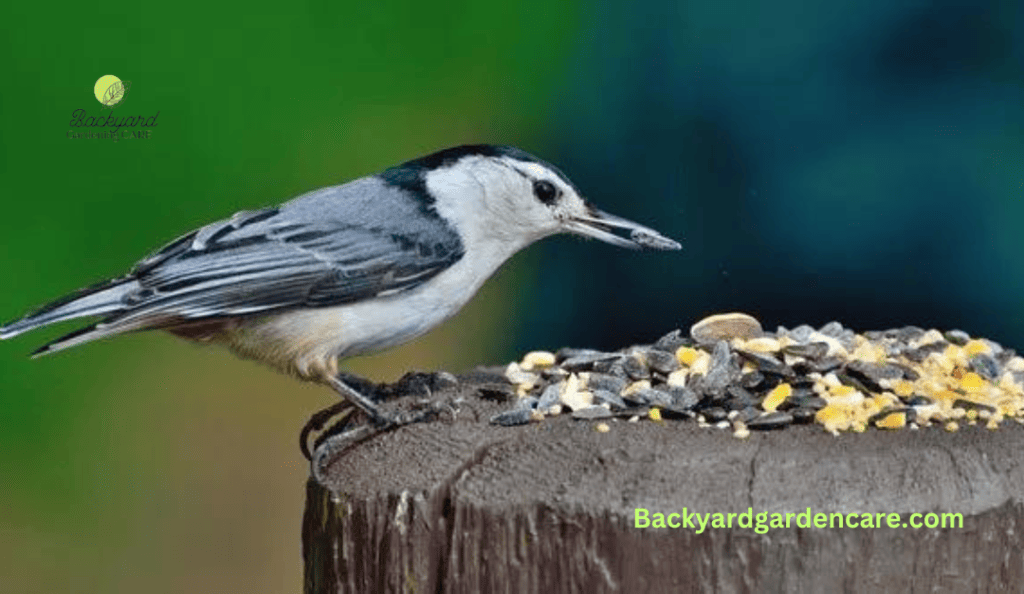
If you’re facing the frustrating problem of birds eating your grass seed, you can employ a few strategies to keep them at bay. One effective method is to distract the birds with alternative food sources.
I’ve personally found that this tactic works wonders in my garden. By hanging a prominent bird feeder in a separate location, I’ve successfully lured them away from my freshly sown grass seeds. It’s amazing to see how they’re more inclined to feast on the seeds in the feeder, which are easily accessible, rather than the ones on the ground. However, it’s essential to remember that having a bird feeder in your garden may attract more birds overall.
On the other hand, my friend Sara, who’s a seasoned gardener, suggests a slightly different approach. She emphasizes that maintaining a safe distance between the protected area and the designated bird feeder zone is crucial to prevent them from feasting on your grass seed.
This way, you can effectively divert the birds’ attention and safeguard your grass seed from being devoured. Sara believes that birds are opportunistic feeders, so if they find an easy food source, such as grass seed, they will keep coming back.
To deter them, she recommends providing alternative food sources that are more appealing to birds. You can hang bird feeders filled with seeds, or place bird baths and birdhouses in your yard. By diverting their attention elsewhere, you reduce the likelihood of them targeting your grass seed.
Create a Fake Owl or Hawk.
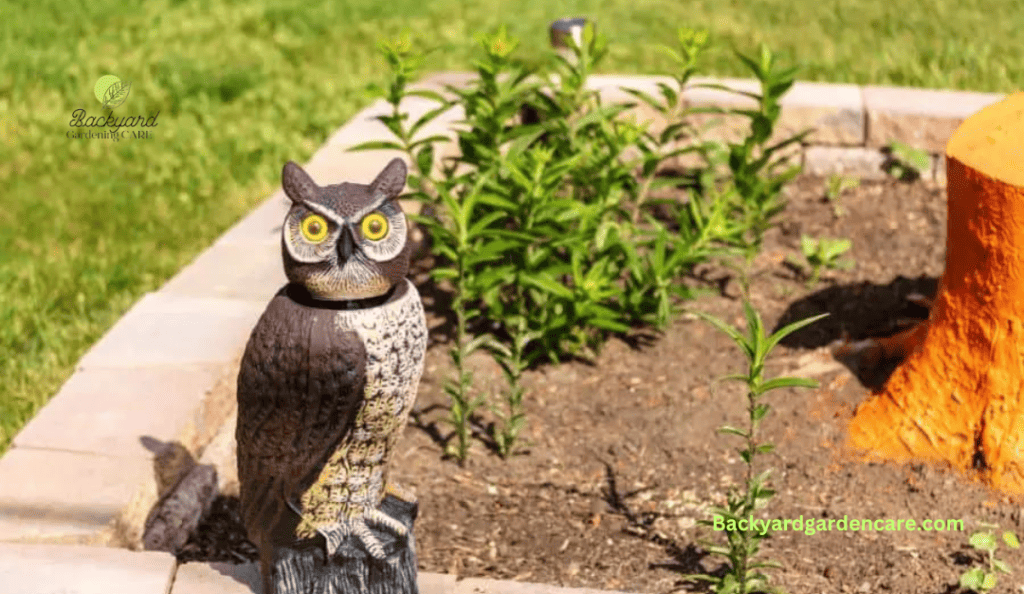
One effective way to keep birds from eating grass seed is using fake owls or hawks as deterrents. This strategy has been successful for a long time, as birds are less likely to visit an area or land on the ground if they see a fake predator nearby.
The presence of predators deters birds and will avoid the area, regardless of how tempting the grass seed may be. Fake owls, hawks, or even rubber snakes can be used to achieve this. To ensure the effectiveness of this method, it is important to change the position and location of the fake predator regularly. Furthermore, identifying snake holes in your lawn can be a significant concern for gardeners.
There is a possibility that birds may begin to recognize the stationary predator as being fake and continue to eat grass seed if they become familiar with it. Moving the fake models around creates a more realistic scenario for the birds, keeping them on their toes and deterring them from the area.
Adding a Layer of Straw or Mulch
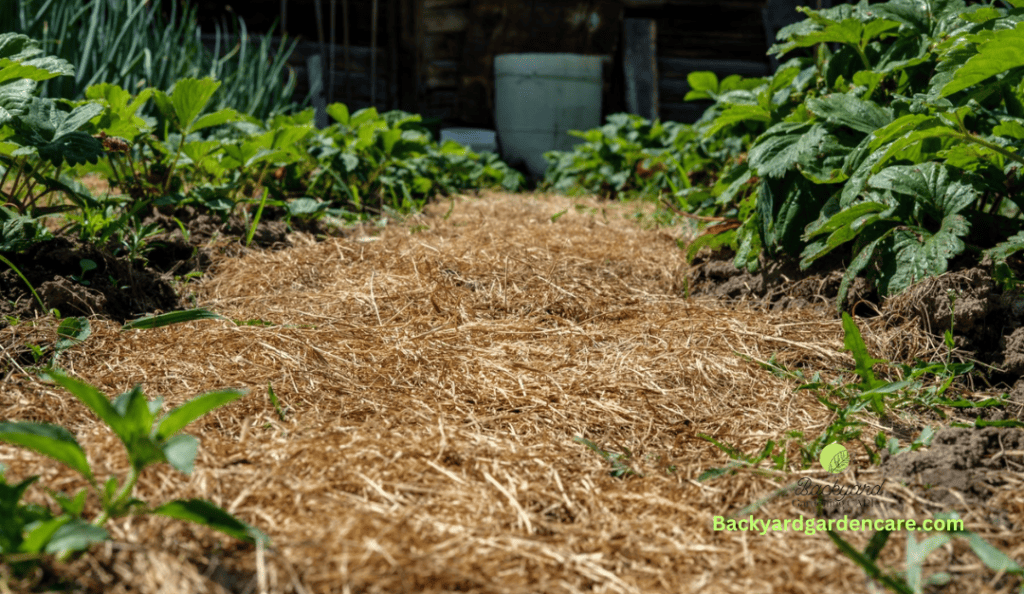
Adding a layer of straw or Black mulch over your newly planted grass seed can provide multiple benefits, including deterring birds from feasting on your seed. Covering the seed with mulch creates a visual distraction for birds, making it harder for them to spot and access it.
Additionally, mulch helps to retain soil moisture and regulate soil temperature, creating an ideal environment for seed germination. Opting for loose and light materials is important when choosing mulch for this purpose.
Grass or straw are excellent choices, allowing light and water to reach the seeds while providing protection. The mulch is a barrier against bird interference while offering additional advantages for your grass seed.

However, removing the straw or mulch is crucial once the new sprouts emerge from the ground. These young sprouts require sunlight to grow and thrive. Removing the mulch at the right time ensures the emerging grass receives the necessary light for healthy development.
Burlap Sheets.
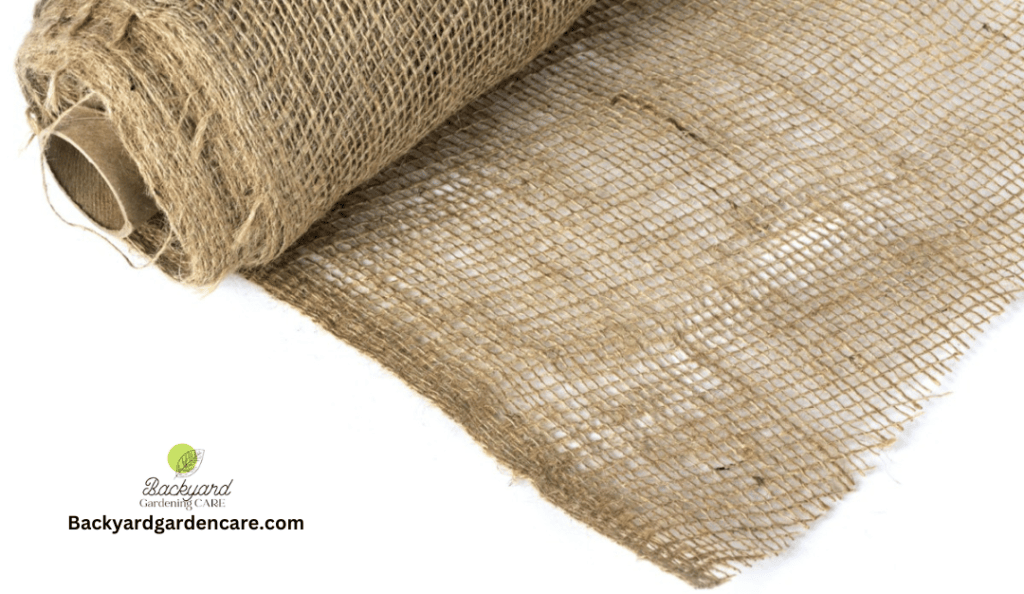
Are you tired of birds devouring your grass seed and hindering its growth? Don’t worry; there are effective methods to keep birds at bay and ensure the successful germination of your grass seeds.
One solution is to cover the seed with burlap sheets. Burlap is an excellent choice because it allows water to seep while permitting heat and light to reach the soil. It’s essential for grass seeds to grow naturally.
Unlike straw mulch, burlap sheets are more resistant to windy conditions, making them ideal for areas prone to high winds. If your garden experiences strong winds, it’s essential to lay down a sheet of burlap over the seeds to protect them.
To secure the burlap, use u-pin wires to anchor the edges of the sheets. This precaution ensures the seed remains shielded from birds and other external factors. Once your grass seeds have germinated, you can safely remove the burlap sheets.

This simple yet effective technique prevents birds from feasting on your grass seeds and allows them to grow undisturbed. Remember, providing the right conditions for grass seeds is vital for a lush and vibrant lawn.
Hang Wind Chimes from Poles.
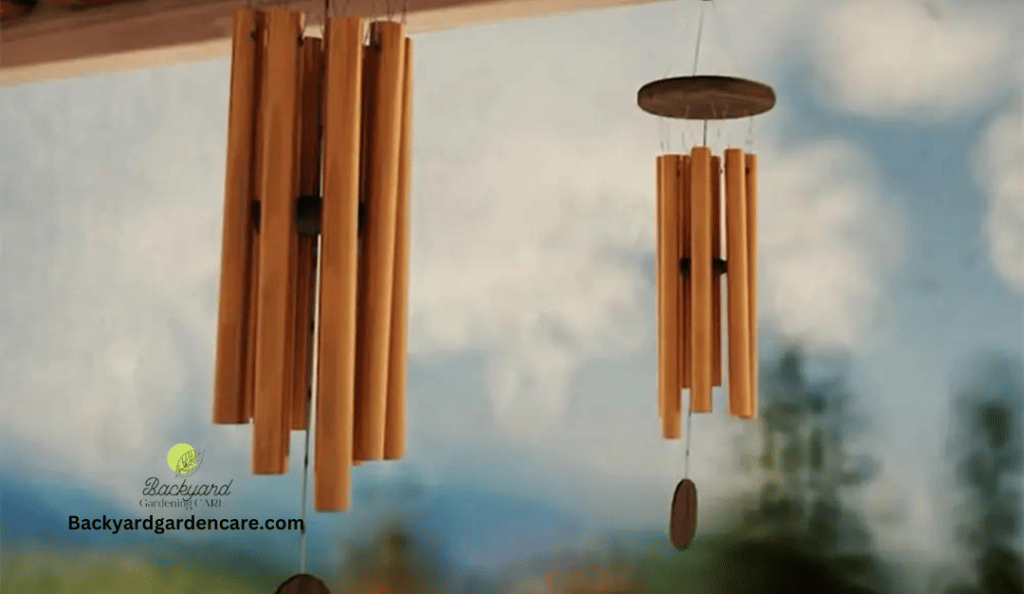
When protecting your lawn from birds feasting on your grass seeds, there is a simple and decorative solution: wind chimes. You can create a pleasant and effective deterrent for birds by hanging wind chimes on poles.
Even if no trees or fences are nearby, you can easily install poles and hang the wind chimes at least three feet from the ground. The motion and sounds produced by wind chimes are known to deter birds.
Shiny objects are particularly effective in repelling birds, and wind chimes offer both visual appeal and auditory deterrent. The great thing about using wind chimes is that you cannot limit how many you can hang.
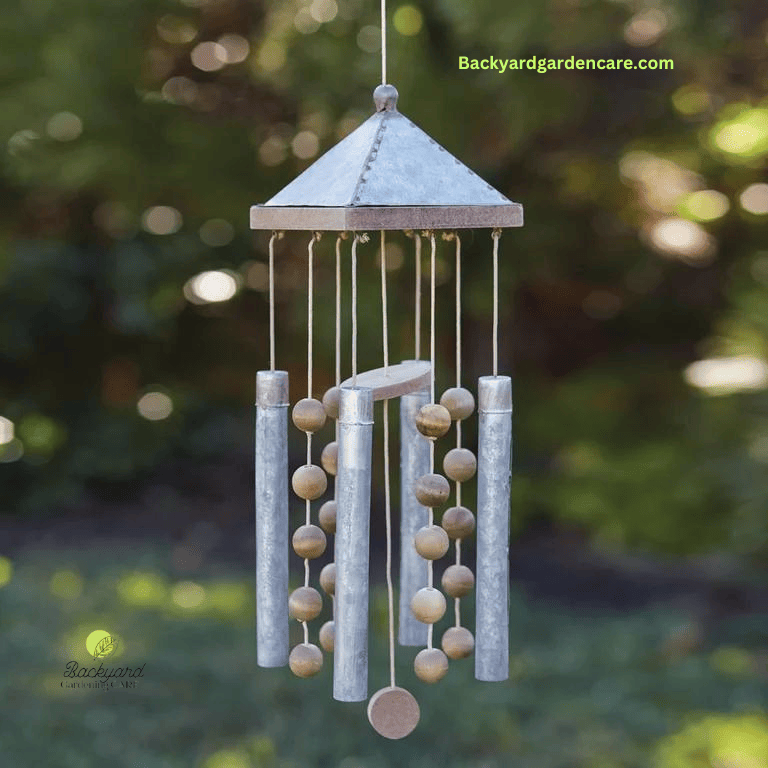
You can hang as many wind chimes as necessary to cover your entire lawn with their sound, ensuring birds stay away from your precious grass seeds. So, add charm and protection to your lawn by incorporating wind chimes as a natural and effective way to deter birds from lunching on your grass seeds.
Netting to Protect Grass Seed From Birds
Protecting your lawn from birds and ensuring that your grass seeds remain undisturbed is crucial to lawn maintenance. One effective solution to achieve this is by utilizing netting.
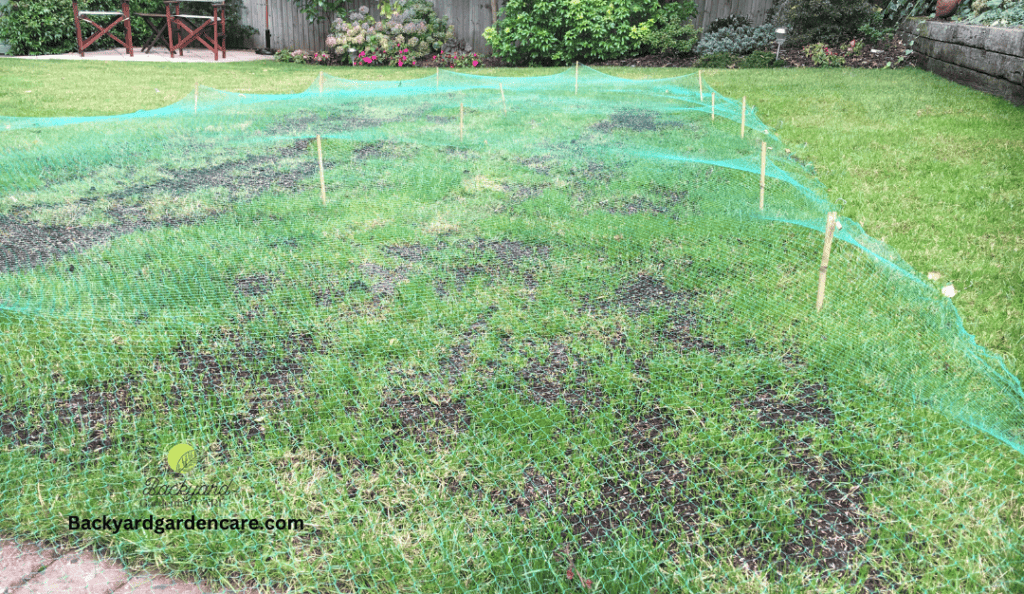
Using a simple netting process, you can create a barrier preventing birds from feasting on your grass seeds. When choosing netting material, choose polyurethane since it offers several advantages. Polyurethane nets are highly resistant to mold and mildew, ensuring durability and longevity.
Moreover, these nets are incredibly lightweight, making them ideal for safeguarding your grass seeds. To get started, you need to purchase an expensive netting product or some cheap way that can cover the size of your lawn.
Once you have the proper netting, carefully place it over where you have planted the grass seeds. For added effectiveness, you can erect four short poles at each corner of the net, creating a gap between the ground and the cover.
To secure the netting in place, tie the corners of the net to the poles using short ropes. This ensures the net remains taut and firmly anchored, preventing birds from accessing the grass seeds.
Implementing netting as a protective measure for your grass seeds offers numerous benefits. Not only does it thwart birds from devouring your hard work, but it also helps to maintain an undisturbed lawn, allowing the grass seeds to germinate and grow without interference.
Toy Windmills
Toy windmills are not only a source of joy for children but can also serve as effective tools for deterring birds. The fast-whirling motion of these windmills acts as a deterrent to birds, making them an excellent choice for keeping birds away from your lawn. If you’re concerned about birds eating your grass seeds, planting windmills near the seeds is a fantastic idea.

Placing the windmills in the areas where you have planted the grass seeds creates a visually stimulating environment that discourages birds from coming close. Leaving at least two feet of space between each toy windmill is important to ensure maximum effectiveness.
This spacing allows the windmills to spin freely and create a visually stunning display for birds.
Once your grass seeds have grown and established themselves, you can gently remove all the windmills without causing any harm.

This method temporarily prevents birds from eating grass seeds, allowing your lawn to flourish undisturbed. So, why not give toy windmills a try? Not only will they bring a sense of fun and whimsy to your lawn, but they will also help protect your grass seeds from hungry birds.
Make a Noise Deterrent.
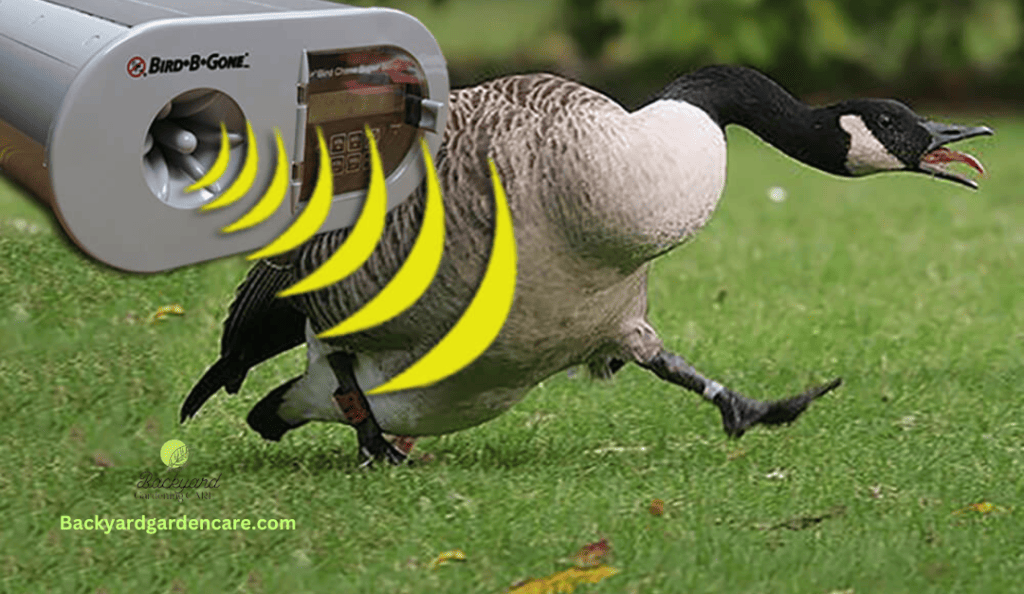
Making a noise deterrent can be an effective way to protect your freshly planted grass seeds from birds. Fortunately, there are various types of noise deterrents that you can utilize for this purpose.
What makes these noise deterrents so great is that you don’t need any specific type of sound to keep the birds away. The great thing about these deterrents is that you can use any sound to keep the birds away. However, it is important to consider your surroundings when testing new sound machines.
If you have neighbors or animals in close proximity, it is advisable to use ultrasonic frequencies above the human range of hearing. These frequencies can cause birds to become disoriented and stay away from your property without causing any disturbance to humans or other animals.
Bird Tape Should Be Hung

Bird tape is another simple yet highly effective deterrent for flying birds. By attaching the tape to trees or fences near your lawn or using stakes to install it directly on the ground, you can create a bird-free zone and protect your precious grass seeds.
Designed with flashy reflective materials and producing a crinkling tune, bird tape effectively deters birds from your lawn. Attaching the tape to nearby trees or fences or installing stakes directly on the ground can create a barrier that birds will naturally avoid.
The best part is that bird tape is long-lasting, with a lifespan of up to 8 weeks, providing continuous protection for your lawn. With the added benefit of grass seeds growing within a short period of 5-10 days.
Bird tape offers an efficient and effective solution to keeping birds away from your lawn and ensuring the healthy growth of your grass. Bird tape can help you rid your lawn of unwanted feathered guests and make it a beautiful, bird-free space.
Final Thoughts.
Keeping birds away from eating grass seed requires a combination of preventive measures and deterrent techniques. By implementing strategies such as using scare tactics, creating physical barriers, and employing bird repellents, you can effectively protect your grass seed from being consumed by birds.
Remember to regularly monitor the area for any signs of bird activity and adjust your methods accordingly. With patience and dedication, you can successfully maintain a bird-free environment and ensure the successful growth of your grass seed.
FAQs
Why Do Birds Eat My Grass Seed?
Birds eat grass seed for several reasons. Firstly, birds have a natural instinct to search for food, and grass seeds provide them with a good source of nutrition. Secondly, grass seeds are small and easily accessible, making them a convenient food source for birds.
Additionally, some birds may be attracted to the insects and worms often present in areas where grass seed is planted, leading them to consume the seed. Overall, birds eating grass seed is a common occurrence and a natural part of their feeding behavior.
How Do I Keep Birds Out of My Newly Seeded Lawn?
Several effective methods exist to keep birds away from your newly seeded lawn. One method uses scare devices like reflective tape, wind chimes, or plastic owls. These items create movement and noise that can deter birds from approaching.
Another option is to install netting or a mesh cover over the seeded area to prevent birds from landing physically. Additionally, you can try placing bird feeders or birdbaths away from your lawn to divert their attention. Finally, consider planting bird-resistant plants around your lawn to discourage birds from entering the area.
What is the Best Deterrent for Birds From Eating Grass Seed?
One of the best deterrents for birds from eating grass seed is bird netting. Bird netting is a physical barrier that can be placed over the area where the grass seed has been sown. It prevents birds from accessing the seed and helps to protect the newly planted area.
Additionally, scare devices such as reflective tape or scarecrow-like figures can also be effective in deterring birds. These visual deterrents create movement and noise, which can intimidate birds and discourage them from approaching the grass seed
Does Grass Attract Birds?
Yes, grass can attract birds. Birds are often attracted to grassy areas because they provide a habitat for insects, worms, and other small creatures that birds like to feed on. Grass also provides cover for birds, allowing them to hide from predators and feel safe.
Additionally, certain bird species, such as thrushes and sparrows, may build their nests in tall grasses. So, having grass in your yard or garden can attract various bird species.
Albert Phipps

Hello, I’m Albert Phipps, your trusted professional gardener. I have a deep passion for nurturing nature’s beauty, With years of experience in landscaping. I’m dedicated to creating lush, vibrant gardens and outdoor spaces.
If you’re seeking guidance on plant selection, grass care, pest control products, garden design, or lawn maintenance tips, don’t hesitate to get in touch. I’m here to help you transform your outdoor space into a thriving and serene landscape.

